When I made the leap to shooting large format this year after almost 20 years of exclusively shooting 35mm film, I immediately was drawn to the wide ranging world of alt-processes. All of a sudden I had a device that could handle printing on glass and metal, and harkening back to the time I spent pulling etchings in the college print lab I wanted to dive in head first to splashing around in collodion and silver nitrate. I soon found out that my little slapped together dark room in my apartment closet was less than ideal for handling some of these substances (while also hoping to retain some of my security deposit) so I was on the hunt for an alternative.
I was lucky to stumble across Nejc Urankar and his project lost light art – in his small workshop in Slovenia he hand pours emulsions for dry plates on both glass and aluminum. Cutting out the need to have a tank to dunk a freshly poured collodion covered plate in silver, shooting and developing while still wet – means that these dry plates can be stored until needed, processed at your leisure and remain pretty resilient once dry. After I pulled my first plate out of the fixer when the positive emerges from the emulsion, I was hooked. The plates can be developed with a bare minimum of supplies, including ones most folks who have a film darkroom flow already have – I often do so on the road out of the back of my station wagon with impressive results. The tonal range is deep, with loads of immaculate little details upon close inspection.
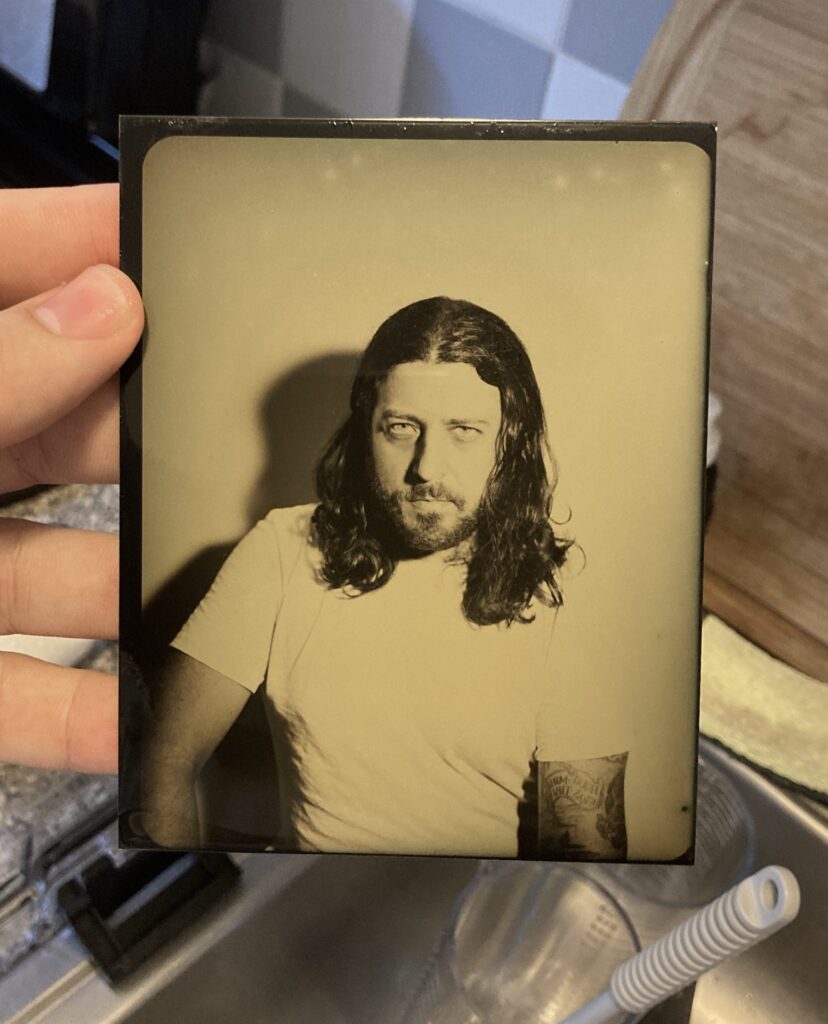
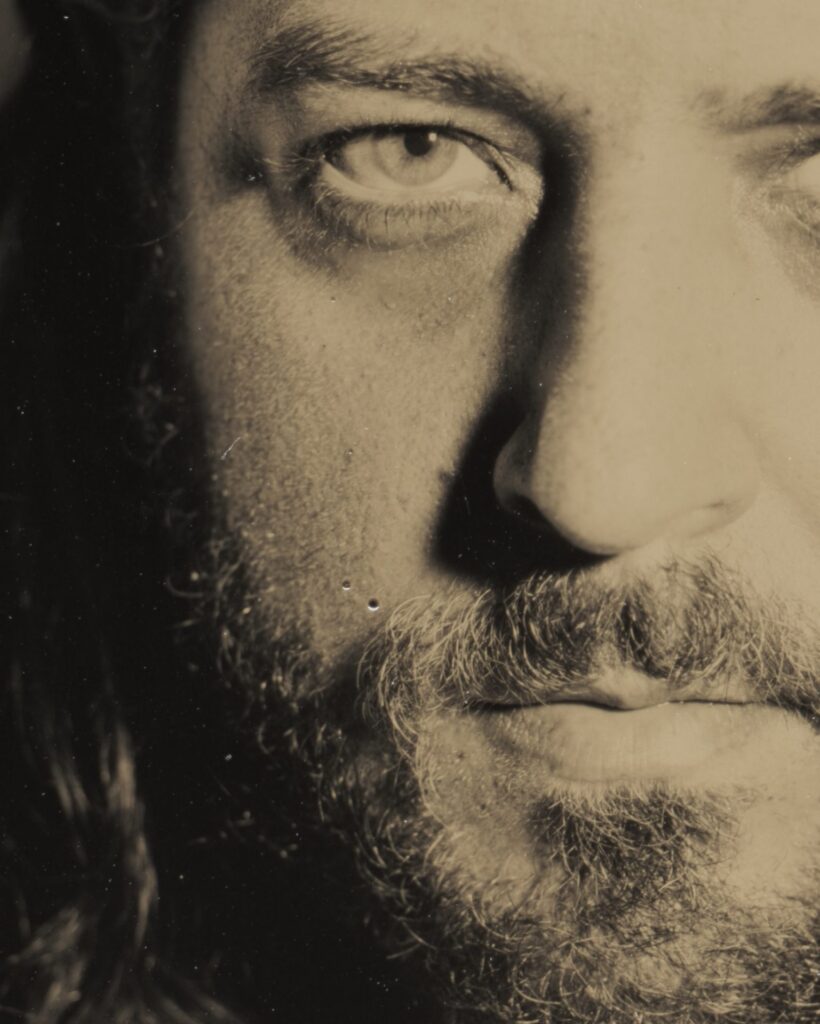
The first plate I pulled, processed in a tray in my tiny closet darkroom under a red safelight, washed and fixed in the kitchen sink…no need for total darkness since this is an orthochromatic emulsion. Shooting indoor requires extremely bright strobes or very long shutter speeds – the emulsion is around iso 3 after all. Some lucky craigslist sleuthing helped me pick up a well used promaster strobe set up for under $500 – you’ll want a strobe of at least 2400 w/s for portrait use.
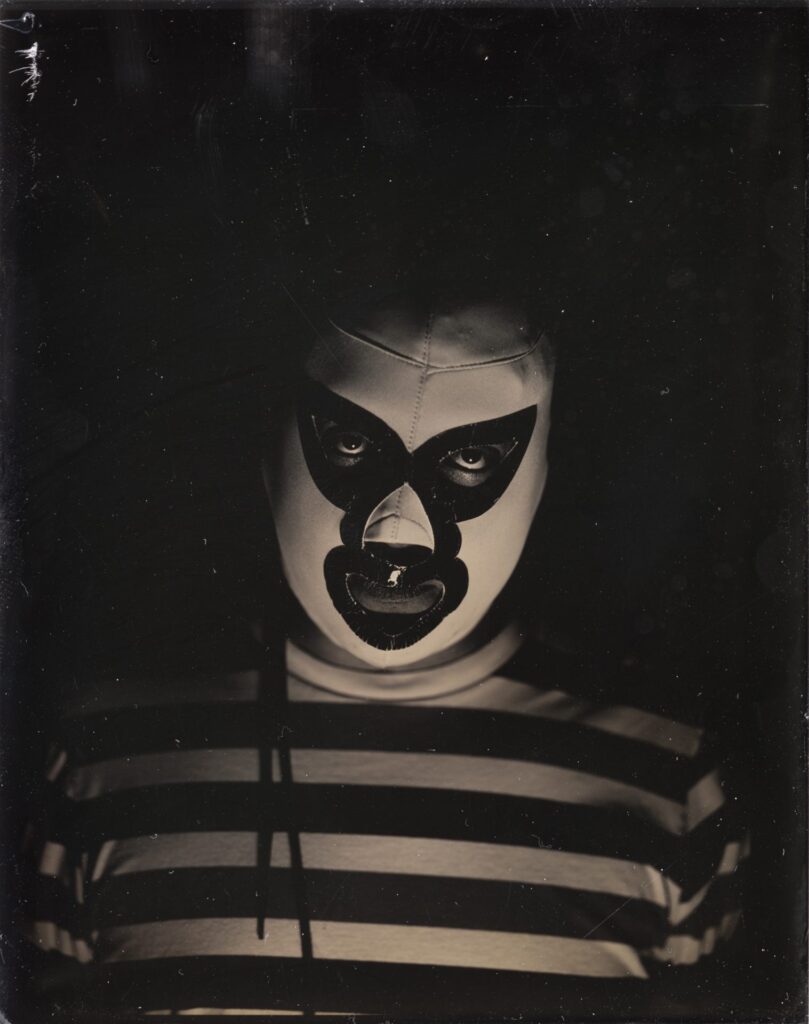
DC musician Rootbug in a portrait session for their upcoming work. While extremely bright lights are required for indoor lighting, slightly underexposing the plates allows the deep reflective blacks to dominate a plate and lends itself to super dramatic portraits.
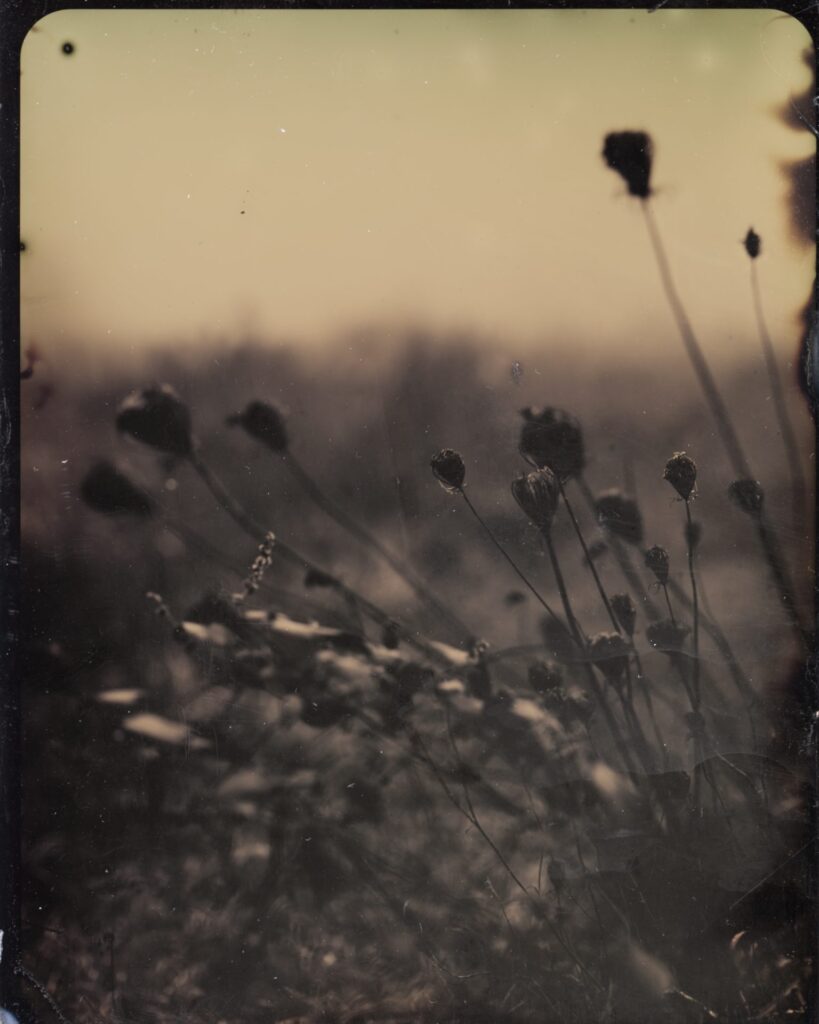
The sun is always an option for exposure times under a minute – make sure to compensate for the UV index that day, something I feel is more art than science. You get a feel for the amount of sunlight hitting a scene the more you shoot.
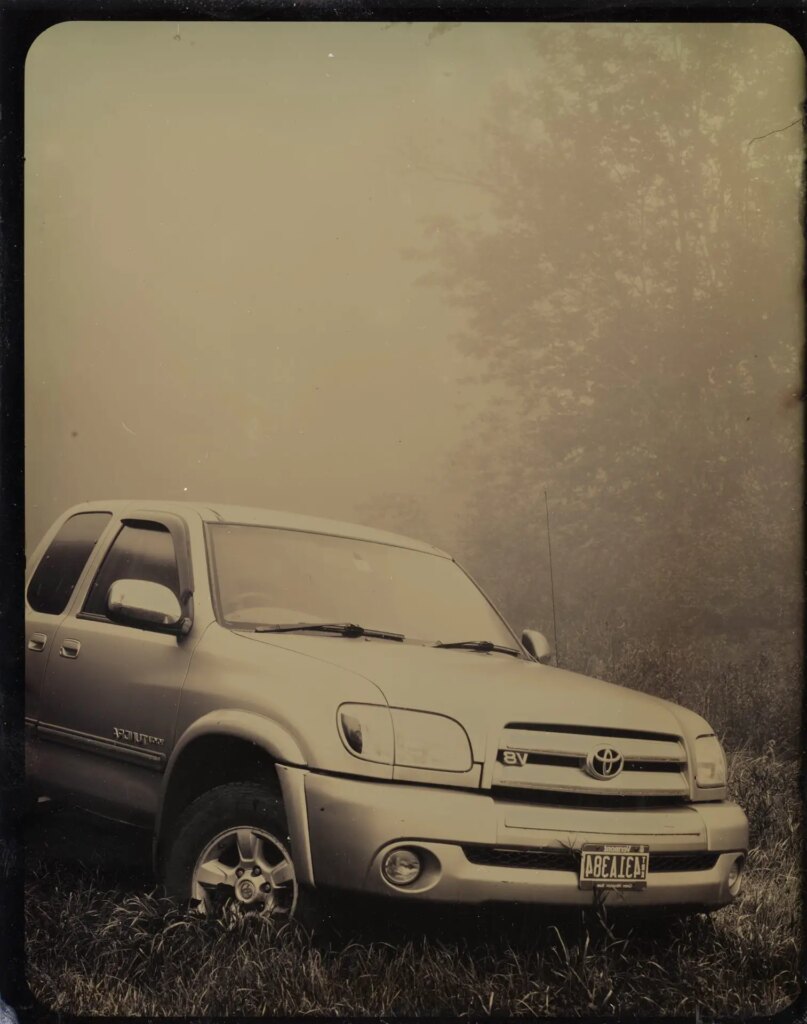
Another quirk of tintypes is that the images come out inverted horizontally. It can make writing a little disorienting, but portraits of folks will have the effect of them looking in a mirror – oddly the way most people are familiar with seeing themselves.
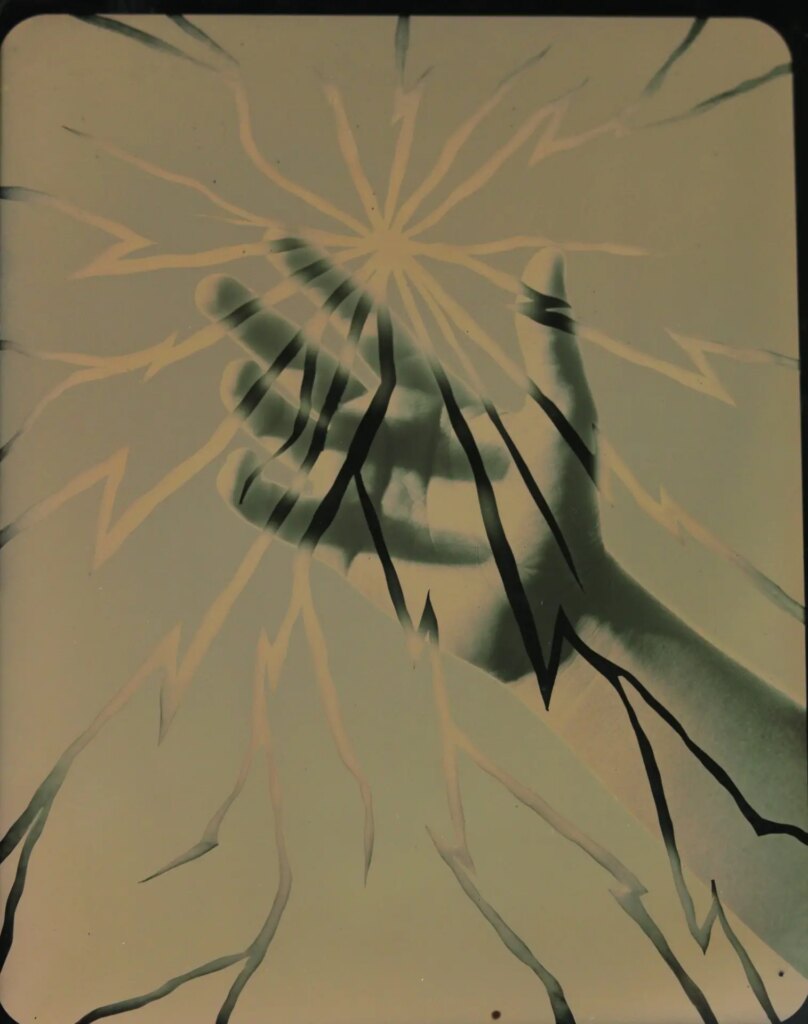
Maybe most importantly alt processes invite experimentation, so don’t be afraid to attempt something novel with them. I encourage anyone with large format kit and a desire to try something new to pick up some dry plates and give em a whirl – sometimes the oldest processes can bring out something new in us.
Please check out Nejc’s work at zebradryplates.com and instagram/lost_light_art and don’t forget to pick up some plates or his fantastic film holders. This guy has a passion for what he does and it shows.
My name is Mike Graziano and I appreciate you reading – I love getting my hands dirty with the most low brow and DIY versions of analog photography and printmaking, so be ready for some more unsophisticated takes. My work is at MGRZ.net and @mgrzdoom on instagram.
Share this post:
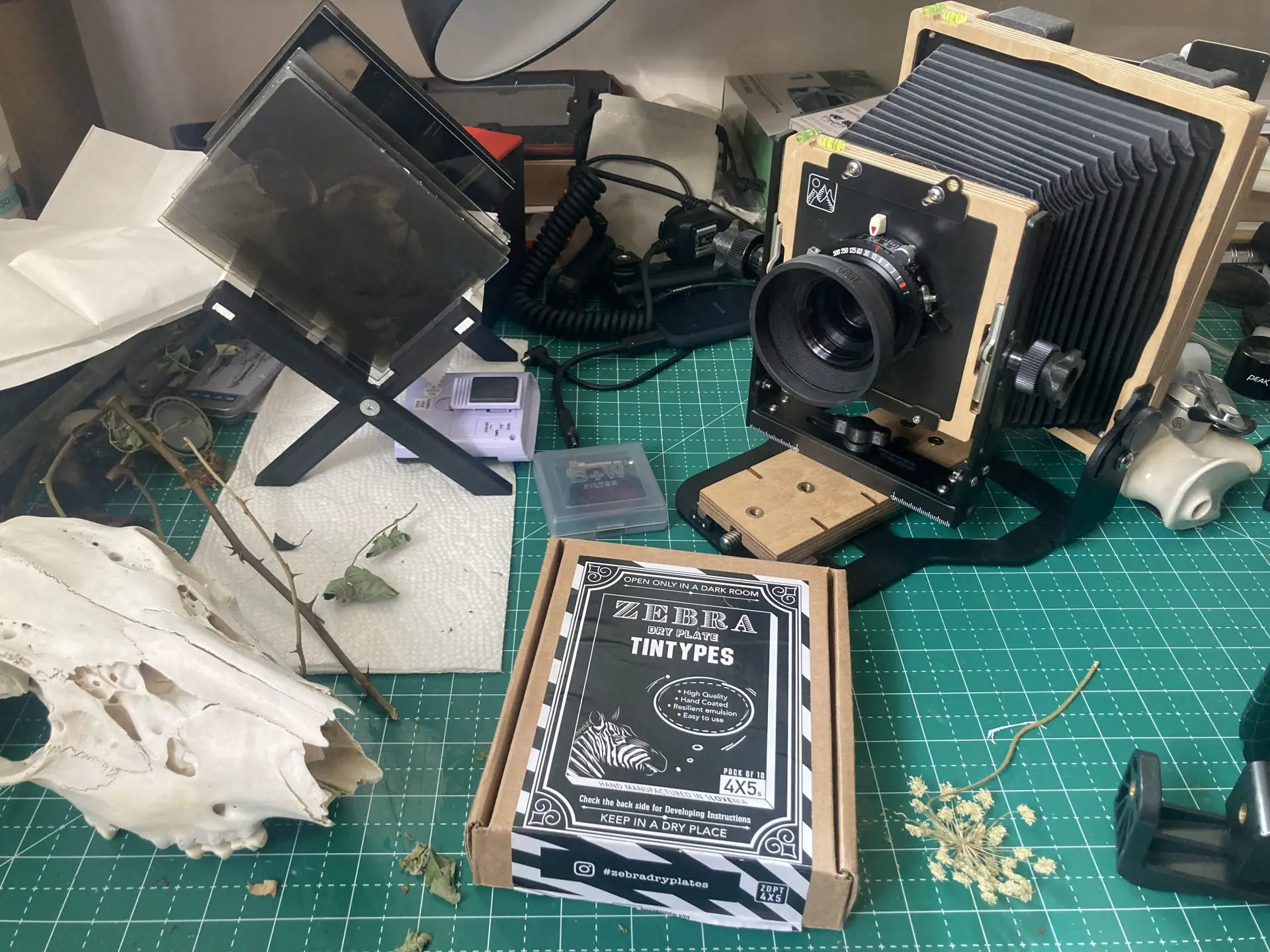
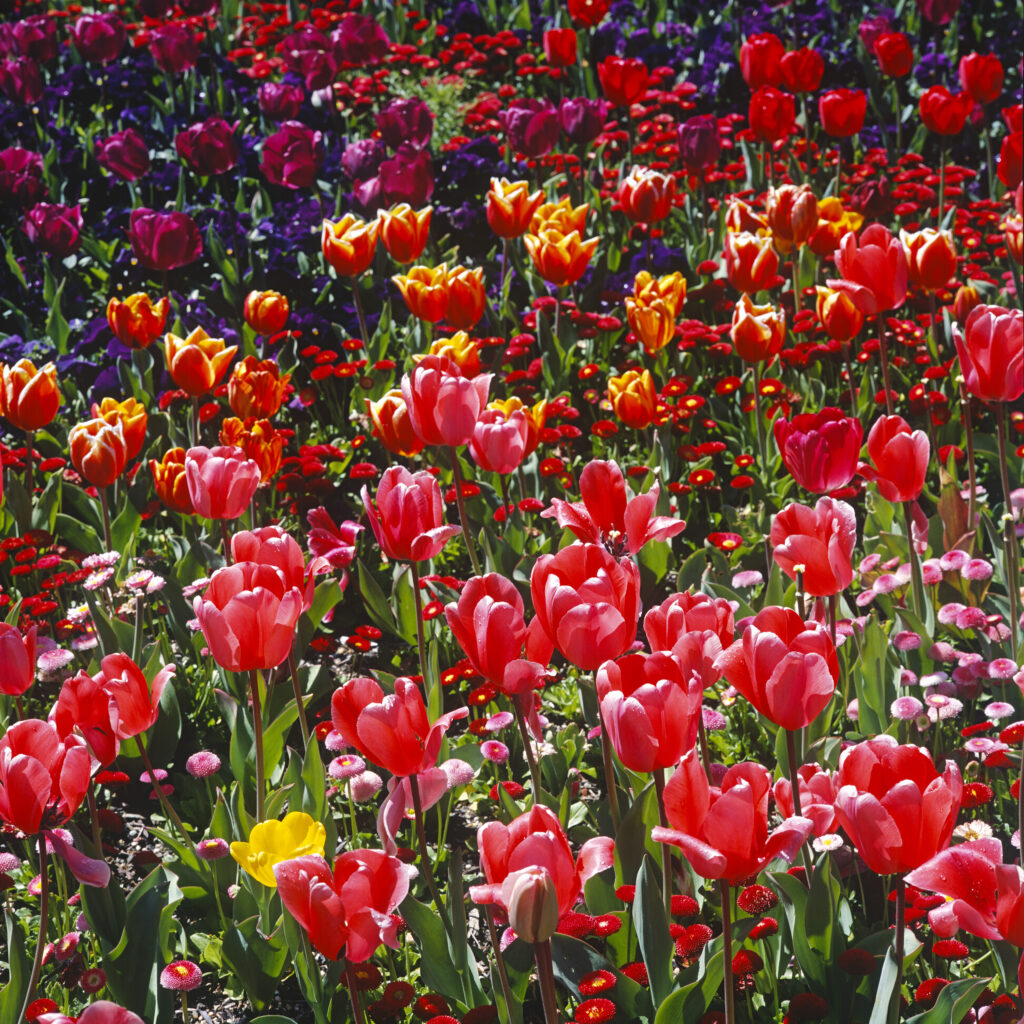
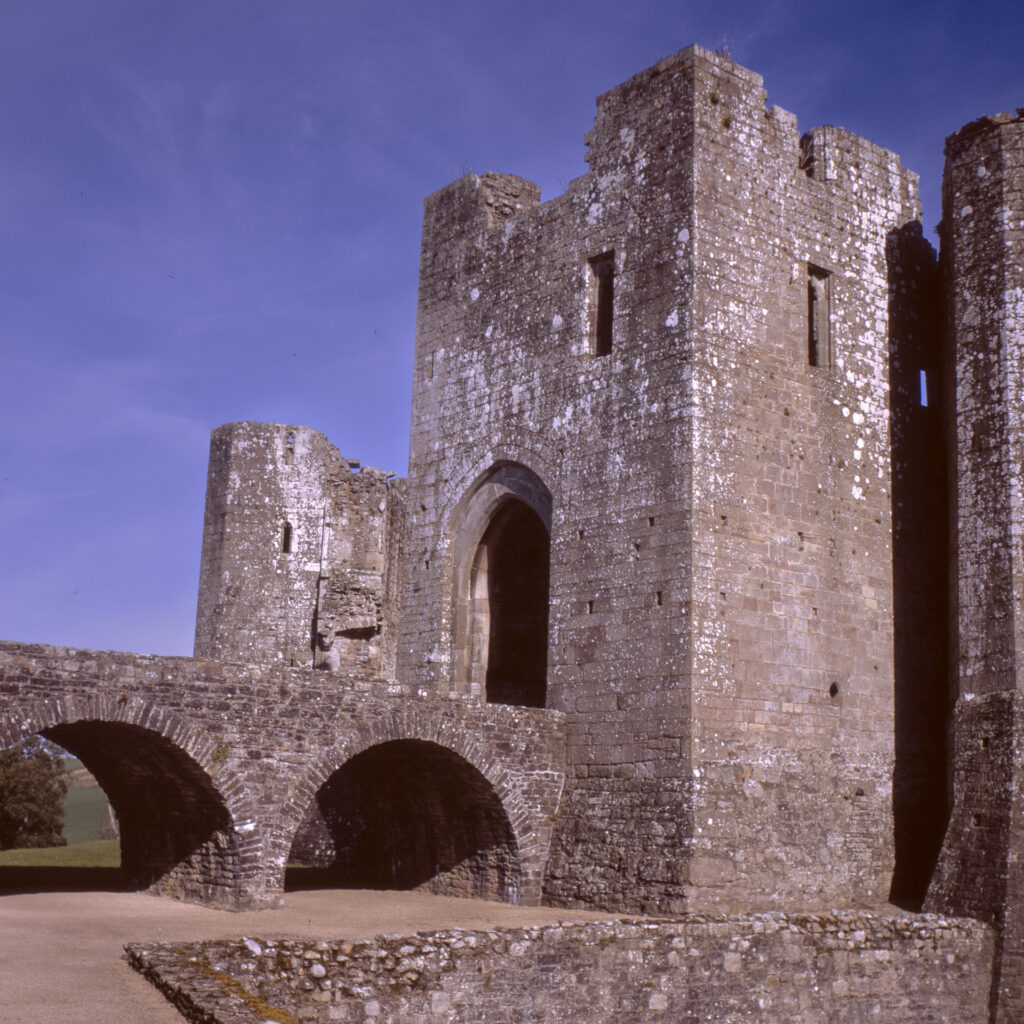
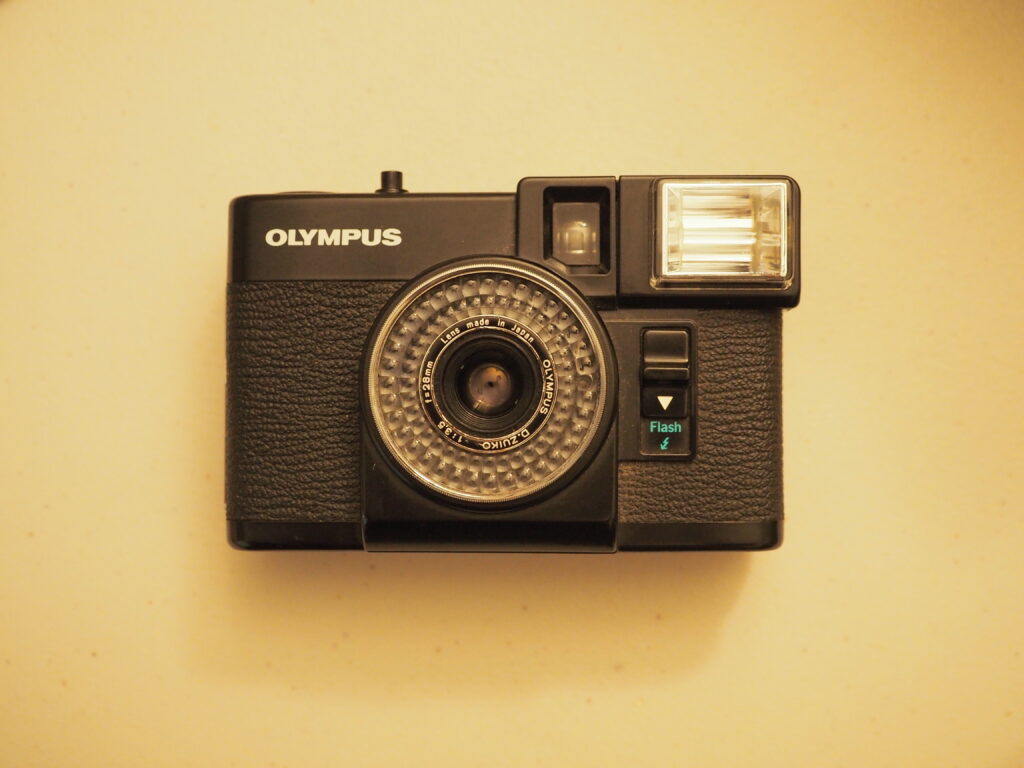





Comments
Kai Lietz on 5 frames with Zebra Dry Plate Tin Types
Comment posted: 20/01/2024
Lance Rowley on 5 frames with Zebra Dry Plate Tin Types
Comment posted: 20/01/2024
Michael Graziano on 5 frames with Zebra Dry Plate Tin Types
Comment posted: 21/01/2024
Ibraar Hussain on 5 frames with Zebra Dry Plate Tin Types
Comment posted: 21/01/2024
Comment posted: 21/01/2024